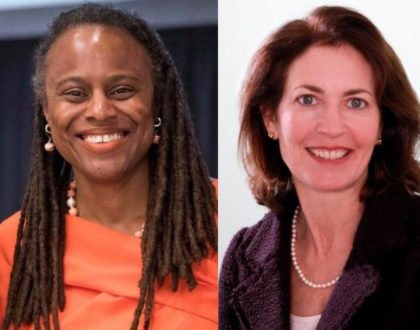Op-ed: Workplace-equity efforts for women of color must be intentional

By Beth Chandler and Andrea Silbert
Our largest employers have a long way to go in reaching gender, racial and ethnic parity. And while progress for white women and men of color is slow and staggered, it is virtually nonexistent for women of color. Need proof? Let’s look at the numbers:
As of January 2021, there were zero women of color leading the nation’s Fortune 500 companies. Black women hold 1.6% and 1.4% of VP and C-suite positions, respectively, compared to 57% and 68% held by white men (even though Black women comprise 7.4% of the U.S. population and white men 35%).
A recent Eos Foundation study of our nation’s 130 largest research universities found that while women comprised only 24% of their most highly compensated employees, women of color were grossly underrepresented, at less than 2.5% of the total top earners. Our 2020 study of Massachusetts’ largest public companies found that women of color represented only 3% of executive team members and 6% of board members.
Where are the women of color?
The lack of diversity among our nation’s top executives is a systemic problem — and not due to empty pipelines. Consequently, it shouldn’t be solved by more leadership-training programs for women, which don’t tackle the systemic barriers. In higher education, for instance, women have been earning the majority of bachelor’s, master’s and Ph.D.s for years, but still aren’t making it to the top in proportion to their representation in the higher ed workforce. So how do we fix it? Here’s a start:
Utilize intersectional data
Leading corporations are doing a good job of tracking and reporting gender, race and ethnicity of their workforce. That’s fine in the aggregate, but it’s much more useful to drill a little deeper: How many Black women are executive vice presidents? How many Asian women are in the C-suite? How many Hispanic women were promoted to the executive leadership team? We need this intersectional data and once we have it, tie that data and managerial compensation to diversify outcomes.
Create an atmosphere of intentionality
It’s not as if search committees and hiring managers are intentionally not hiring women of color. It’s just that we tend to hire people we know, or people who are referred to us — essentially, people who look like us. That’s why there must be intentionality around people to whom we are reaching out, intentionality around getting to know other people, and intentionality around connecting to other people. If we don’t expand our networks, our hires will look just like we do, and the cycle will perpetuate.
Even when there is a commitment to diversity — you can have diversity on the search committee and in the finalist pool — but if in your last 10 searches, women of color were 30% of the finalists yet received none of the positions, it is time to wonder how committed to diversity your organization really is. We urge organizations to examine whether diverse applicant pools translate into diverse outcomes. That’s intentionality.
Support parity legislation
The commonwealth has more than 700 boards and commissions (which equates to more than 4,000 seats). The Parity on Board bill would require these entities to have an equal number of men and women while, at a minimum, mirroring the race and ethnicity of the state. The bill also calls for efforts to include women of color; that’s because initiatives to include women generally benefit white women, while efforts to include people of color generally benefit men of color. Women of color are usually left out. This bill would rectify that.
The Transparency Act requires employers to report the average pay for employees by gender, race, and ethnicity as well as give the percentages of each group among their 10 most highly compensated employees. It allows employers to compare and benchmark their diversity, equity and inclusion efforts with their peers and lets employees hold them accountable for helping women and people of color move up in these companies.
It’s time for organizations to think about and enact practices and procedures so that everyone can shine and thrive. Women of color have the skills, just not the opportunities. And when given the chance, they have proven they belong. It’s time to narrow the pay gap and let more women of color into the circles of power.
But none of that can happen unless we take that first intentional step.
Beth Chandler is the CEO and President of YW Boston. Andrea Silbert is the president of the Eos Foundation.
______
About YW Boston
As the first YWCA in the nation, YW Boston has been at the forefront of advancing equity for over 150 years. Through our DE&I services—InclusionBoston and LeadBoston—as well as our advocacy work and youth programming, we help individuals and organizations change policies, practices, attitudes, and behaviors with a goal of creating more inclusive environments where women, people of color, and especially women of color can succeed.
YW Boston is leading the Parity on Board coalition and advocating for legislation to ensure gender parity and racial and ethnic diversity on public boards and commissions. But representation won’t improve unless public boards commit to fostering inclusive workplaces that can support these diverse candidates and unless these candidates of diverse backgrounds answer the call to serve. Visit parityonboard.org to learn more about getting involved in a public board or commission in Massachusetts, or to sign up as a coalition partner in support of more diverse leadership in our Commonwealth.
